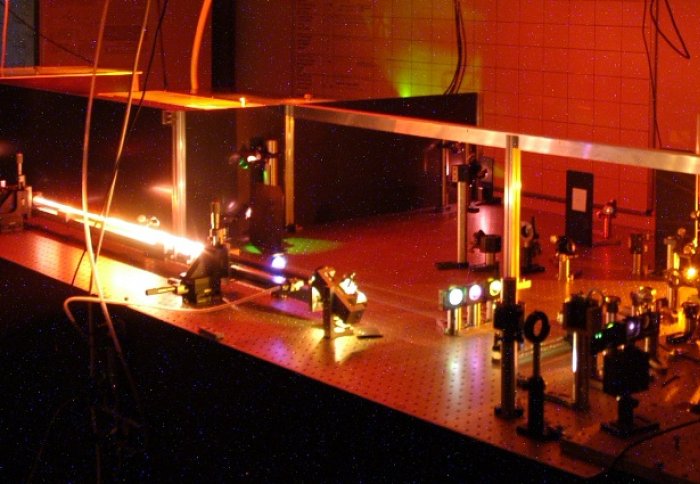

A physicist at Imperial College London who works with lasers is among 7 researchers who have received backing from the Royal Academy of Engineering.
Dr Edmund Kelleher of the Department of Physics has been awarded a Royal Academy of Engineering Research Fellowship for his work in next generation short-pulse visible and ultraviolet light lasers and an outstanding contribution to engineering.
The research fellowships, announced today, are given to outstanding researchers from all branches of engineering who are about to finish their PhD or have up to three years Post-Doctoral research experience. The scheme provides funding for five years to encourage the best researchers to remain in the academic engineering sector.
Dr Kelleher comments: "I feel very proud to have won one of these prestigious and highly competitive fellowships. Receiving a Royal Academy of Engineering Research Fellowship is a great acknowledgement from the scientific community that the work I have done and the programme of research I will pursue is exciting and relevant, and most importantly making a difference."
"I feel very proud to have won one of these prestigious and highly competitive fellowships. Receiving a Royal Academy of Engineering Research Fellowship is a great acknowledgement from the scientific community that the work I have done and the programme of research I will pursue is exciting and relevant, and most importantly making a difference."
Visible light lasers are used in a variety of applications, including very precise measurements and medical technology. For example, clinicians often use laser light to diagnose and treat diseases like gum disease and glaucoma. However, current laser sources have room to grow -- by shrinking.
"Current laser sources are in need of improvement as they often require complicated, expensive and inefficient set-ups. I want to work toward making laser systems smaller, more user friendly and able to cover the entire visible and ultraviolet spectrum," Kelleher said.
Receiving a Royal Academy of Engineering Research Fellowship is a great acknowledgement from the scientific community that the work I have done and the programme of research I will pursue is exciting and relevant, and most importantly making a difference.
– Dr Edmund Kelleher
Department of Physics
These sorts of improvements should have a significant impact on advanced instrumentation in several scientific fields. Scientists across a number of disciplines, from electrical engineering to archaeology, rely on sources of laser radiation for fundamental measurements.
Additionally, better understandingthe formation, movement and output of pulses in any laser source could provide impressive benefits. According to Dr Kelleher, it could prove an important test-bed for developing and confirming theories to mitigate against cataclysmic events that are currently impossible to predict.
"Just like a flash is used in photography to capture quickly moving objects, a laser pulse can be used to take a snapshot of events that occur on very, very short time-scales, such as the motion of an electron.
"In addition, understanding how the pulse forms and reacts to its environment within the laser can improve our understanding of the movement and action of more complex systems, from giant ‘freak waves’ observed in oceanic systems to spikes in financial markets."
Article text (excluding photos or graphics) available under an Attribution-NonCommercial-ShareAlike Creative Commons license.
Photos and graphics subject to third party copyright used with permission or © Imperial College London.
Reporter
Rosemary Peters
Department of Humanities

Contact details
Email: press.office@imperial.ac.uk
Show all stories by this author




Leave a comment
Your comment may be published, displaying your name as you provide it, unless you request otherwise. Your contact details will never be published.